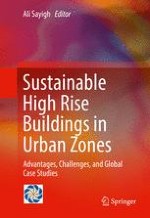Abstract
In the light of EU’s requirements to achieve a major cut in energy use by 2050, Sweden has the same target. The built environment must by 2020 reduce energy use by 20 and 50 % by 2050. The size of the future building stock will naturally increase and regardless of how energy efficient future buildings will be, the energy performance of the old stock must be improved in order to reach those goals. In major renovation projects involving multifamily buildings in large residential areas in the cities, 50 % reduction can be achieved. This is cost-effective and profitable even if the rent is increased.
Gävleborg is a sparse region in the North, with few cities. Multifamily buildings are generally much smaller than in large cities and owners are reluctant to impose changes that increase rents due to the housing situation in the region. In consequence, the Regional Council and the University of Gävle set out to assess the potential and feasibility of reducing energy use and carbon dioxide emissions in this region’s multifamily buildings. Eleven real buildings were investigated, each having various ownership forms, different technical attributes and heating sources. Energy audits and measurements were conducted to assess the condition of each building. Performances of the buildings and proposed improvements were simulated with building energy simulation programs, whilst life cycle cost analyses were conducted to study viability. Carbon dioxide emission (CO2) reductions were estimated for each improvement.
Based on the results, a concluding discussion is made on whether or not some myths on energy use and retrofitting are true. The following is concluded: It is possible to reach a 50 % reduction, but it is not economical with the costs involved and with today’s energy prices and moderate price increase over time.
Retrofitting or improvements made in the building’s services systems (HVAC) are more economical than actions taken to improve performance of building by constructions. HVAC improvements give about 20 % reduction in energy use. However, mechanical ventilation systems with heat recuperation are not economical, though these may or may not substantially reduce use of thermal energy.
Solar energy is, despite the latitude of the region, economically viable—especially PV solar energy. Photovoltaic panels (PVs) are becoming viable—the combination of PVs and district heating is beneficial since saving electricity is more important than thermal energy in district-heated areas.
